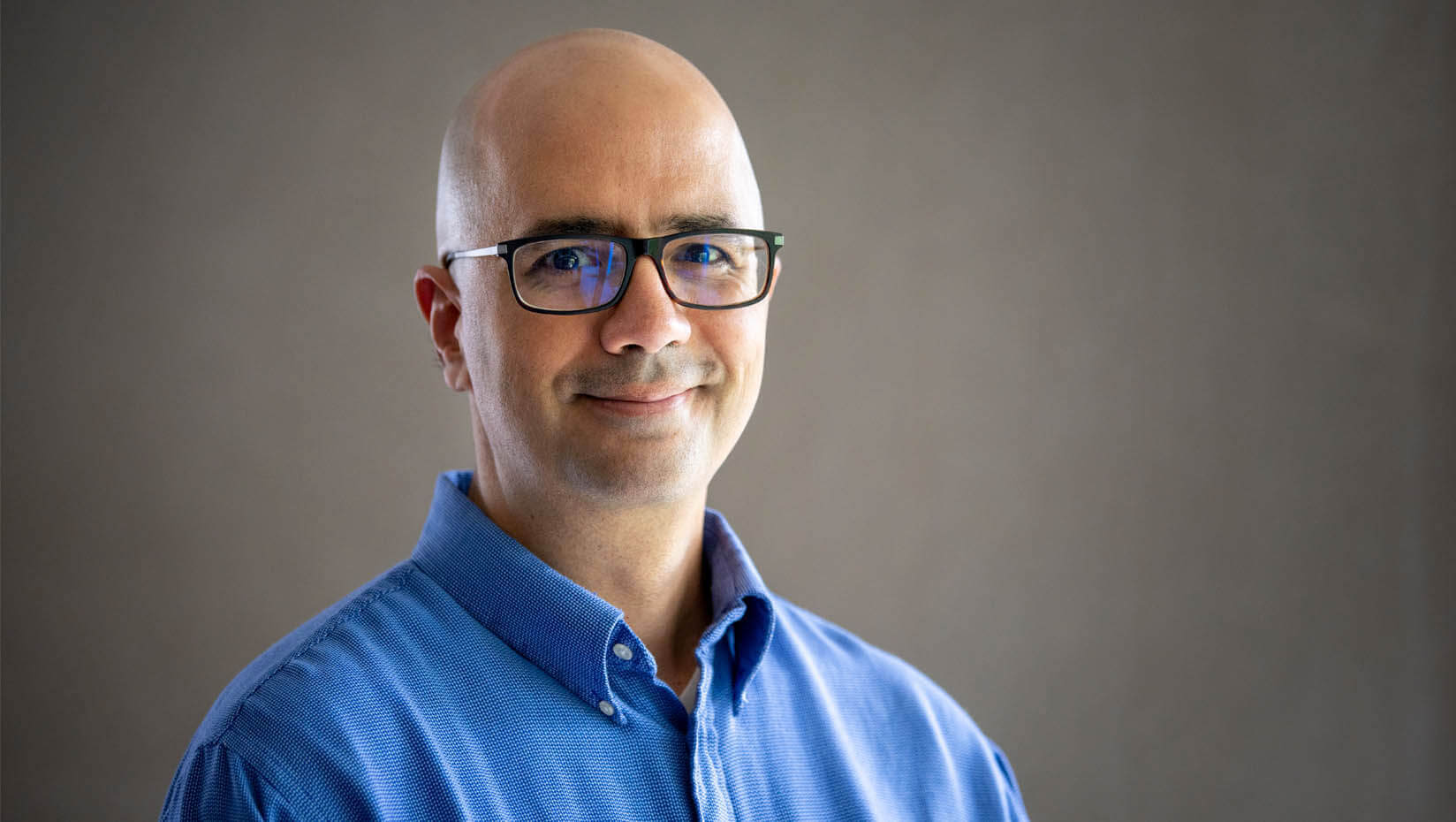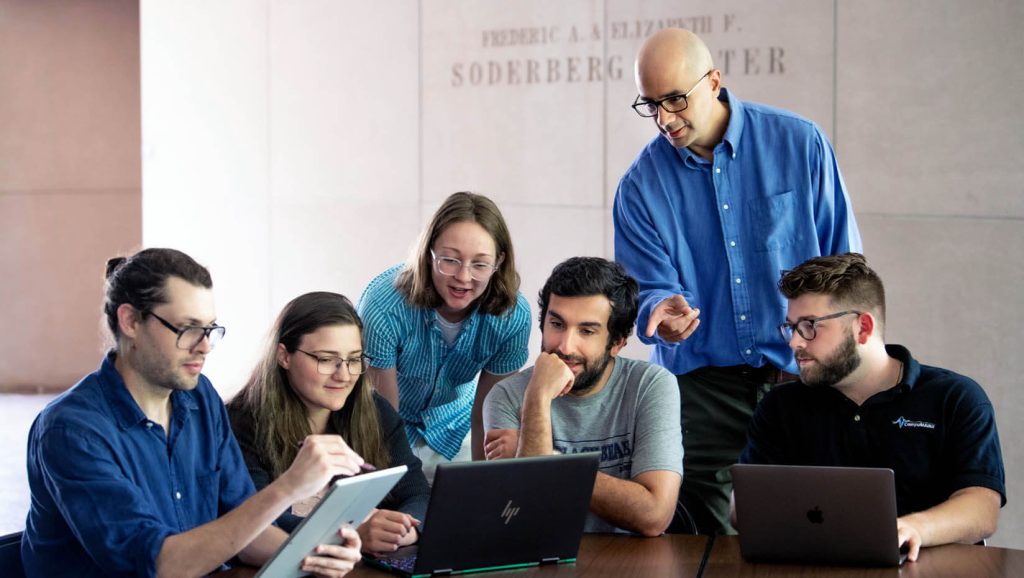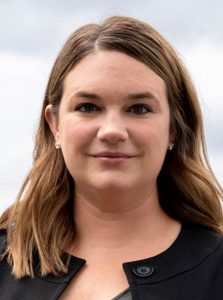
Andre Khalil’s research uses imaging techniques to transcend disciplines
Andre Khalil’s Computational Modeling, Analysis of Imagery and Numerical Experiments (CompuMAINE) lab has used image analysis techniques to solve a range of problems at every scale, from cancer cells to galaxies. And he has only scratched the surface of its potential.
Since 2008, over $1 million in funding has supported CompuMAINE research using image analysis for early detection of breast cancer. In addition to the highly publicized and lauded cancer research that has led to two patents, Khalil’s lab has studied mathematical fractal structures, nuclear structure in developing embryos, the genetic underpinnings of Huntington’s disease, receding glaciers, the relationship between chromosome size and position and indicators for seizures.
The common thread through all this research, no matter the topic, is the innovative application of image analysis tools that Khalil has experimented with throughout his career. To Khalil, though, the tools themselves are less important than the way that scientists use them.
“There are labs who dedicate their work to image analysis,” Khalil says. “I think in our lab, image analysis is the tool that we’re using to investigate science. That’s maybe a subtle but important difference for us. I find it more rewarding to make a bigger commitment to the underlying application.”
Interdisciplinary science had always been a part of Khalil’s life. His father was trained as a chemist, but eventually worked as an oceanographer in the estuaries in their native Quebec.
“He said, ‘Way back, there was only biology and chemistry and it was separate — somewhere along the way, we got biochemistry,’” Khalil says. “He used to tell me these things as a kid.”
Despite his father’s teaching, Khalil studied math for his undergraduate and master’s degrees at Concordia University in Montreal — and, for him at that time, “the purer, the better.”
“If there were no eventual applications to what we were doing that’s what I got a kick out of,” Khalil says.
At the end of his master’s degree, though, he discovered fractal geometry, which is known in the field as “the geometry of nature” because the patterns appear across the natural world, from root systems to the rugged coastlines. As he delved further into the world of fractals, he read Stephen Hawking’s book “A Brief History of Time” and decided he wanted to use his math skills for real-world applications.

Khalil completed an interdisciplinary Ph.D. in mathematics and astrophysics at Universite Laval in Quebec, where he studied images of the interstellar medium to look at the distribution of atomic hydrogen in the galactic plane. In a postdoctoral fellowship at The Jackson Laboratory in Bar Harbor, he transitioned from astrophysics to biophysics using similar image analysis tools and techniques at a completely different scale.
“We can extract a lot of meaningful information from an image using these techniques,” Khalil says. “You move from light-years in ranges to microns but a lot of the physical processes are universal, no pun intended.”
At The Jackson Laboratory, Khalil made connections with researchers at UMaine, and after a few months, he joined the math department in 2005. In 2008, he started a project with funding from the Maine Cancer Foundation to use image analysis to better predict breast cancer from mammograms. The research falls into the field of radiomics, a new area of medical study that aims to extract large amounts of quantitative features from medical images using data-characterization algorithms.
Part of the reason he was interested in the research was personal. He had family members who had cancer. He also had a lot to offer to the study of breast cancer with his specific set of research skills.
“Mammography is like a data analysis paradise,” Khalil says. “Women go in for their annual or biannual screenings — depending on what health insurance covers and what country you’re in — and you have tons and tons of data which is not the case for other cancers.”

By analyzing imaging done by scientists at University of California, Berkeley, Khalil realized that cancer cells are more dynamic than healthy cells, performing a disorganized sort of “drunken dance.” By looking out for patterns of disorganization in mammogram images, Khalil and Kendra Batchelder, who is conducting an Interdisciplinary Ph.D. in computational biomedicine, found that doctors can better predict a patient’s risk of developing breast cancer tumors.
Not only that, because there is so much data related to mammography, Khalil and his team can look at the images over the years and see what the outcome was to test their hypothesis.
“We have found more of this disrupted tissue in a mammogram of a tumorous breast,” Khalil says. “Not only can this eventually be used as a diagnostic, it could be a predetection. Is there a tumor and it disrupts the terrain, or is it that the terrain becomes disrupted and then the tumor comes in? We think it’s the latter.”
In January 2018, Khalil joined the UMaine Department of Chemical and Biomedical Engineering. Though his research uses math and he loves teaching the subject, his research at CompuMAINE focused much more on applying that knowledge to chemical and biomedical engineering — exactly the kind of interdisciplinary research that, perhaps, he was always destined to do.
Even now, he sees connections between his biomedical research and the star stuff he studied decades ago, like the way tumors exhibiting fractal structures are more likely to spread through the breast while galaxies with fractal structures are better at forming stars.
“The same way that cancer is efficient if it’s using a fractal structure, in the interstellar medium, the galaxy is going to be more efficient at forming new stars if it uses a physics that is similar to cancer,” Khalil says. “There’s a shiver down your back. This is really universal.”
In September 2020, CompuMAINE was awarded a three-year $423,000 grant from the National Cancer Institute to continue its work on the computational analyses of mammograms, and also extend the work to breast tissue analyses from biopsies, lumpectomies and mastectomies with the help from Karissa Tilbury, assistant professor of chemical and biomedical engineering.
The grant awarded to Khalil and Tilbury was only the fourth awarded to UMaine from the National Cancer Institute, and the first to the College of Engineering.
“Pathology is the clear answer, the final call,” Khalil says. “The eventual goal is to see, we have the data in different forms from the same patient, how can we integrate it in a single multivariate space.”
Khalil and Batchelder are actively pursuing commercialization of their computational approach to breast cancer risk analysis. They have received two patents on the associated technology, and participated in UMaine commercialization programs designed to help them identify product-market fit and accelerate development.
Two $25,000 grants (one from the Maine Technology Institute and another from the National Institute of General Medical Sciences) have supported their commercialization efforts, and the pair recently completed UMaine’s MIRTA accelerator program. With the help of Jeremy Juybari, a Ph.D. student in computer engineering who is co-advised by Khalil, they are currently participating in a cohort of the National Science Foundation’s national I-Corps program as the next step toward developing a commercial product that could be used to identify the risk of breast cancer from mammography. The lab was awarded an additional $50,000 from the National Science Foundation for their participation in this program.
CompuMAINE’s work isn’t done, though. Khalil says his lab is also working on applying similar techniques to pancreatic cancer. There is potential to use their methods to study climate change, solar physics, muscular dystrophy, cosmology, artificial bone implants, protein modeling and more.
“We’re all this generation of attention deficit, moving onto something as soon as we get bored, with the underlying commitment of finishing what we started,” Khalil laughed. “It’s been very rewarding to have this opportunity to work on projects from so very different disciplines. But perhaps what I value most of all is the successful integration of undergraduate and graduate students in all aspects of these research activities. That’s really what I love so much about my career so far.”
Contact: Sam Schipani, samantha.schipani@maine.edu
